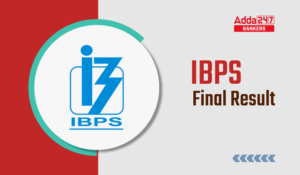The blockchain is a shared distributed ledger technology in which each transaction is digitally signed to ensure its authenticity and integrity. Each transaction is digitally signed to ensure its authenticity and that no one tampers with it, so the ledger itself and the existing transactions within it are assumed to be of high integrity. Bitcoins and other cryptocurrency are much in hype these days, with debatable topics like is cryptocurrency safe? should it be made legal or banned in nations? If you were wondering what this is and how it works, then keep on reading because in this article we have discussed how Blockchain works in a simplified and easy to understand manner.
Well, each block contains some Data, a Hash of the block, and a Hash of the previous block. The data that is stored inside a block, it depends upon the type of the blockchain. The bitcoin blockchain, for example, store details about a transaction- sender, the receiver and the number of coins. Just as we mentioned a block also has a Hash, which is something unique like a fingerprint, it identifies the block and all of its content.
Once a block is created its hash is calculated and changing something inside the block will also lead the hash to change, thus hashes are the key to detect if some changes have been done in existing blocks in a blockchain. And if the unique factor- “the Hash” of a block changes it no longer is the same block. The next most important element is the Hash of the previous block and this effectively helps to create a chain of blocks resulting in Blockchain technology.
Considering a blockchain of 3 blocks- the third block will contain a hash of the second block and the second will contain the hash of the first one. The first block is special as it is from where the chain begins, it does not contain any previous hash and it is called Genesis Block. Let us consider we have tampered the second block this will result in its hash being changed and thus, as a result, that will make block three and all following blocks invalid because they’ll no longer store a valid hash of the previous block. But due to advance technology and speedy calculations by computers it is possible for a computing machine to calculate new hashes which can be a possible flaw in this mechanishm. To avoid this setback blockchain has something called “Proof-of-work” which slows down the creation of new blocks. In bitcoin’s case, it takes around 10 minutes to calculate proof-of-work and create a new block.
Instead of a central management system, blockchain uses a distributed peer to peer network, so when someone joins this network he gets a full copy of the blockchain. A user or member is referd to as a node. When someone creates a new block each node recieves a copy of that block verifies it to make sure it hasn’t been tampered with and if everything checks out each node adds the new block to their copy of block chain. That is how all the nodes (users/members) in this network create consensus! This tecchnology is constantly evolving and new editions are being done as per the requirements, one such recent development is creation of Smart Contracts. These contracts are simple programs stored on the blockchain and can be used to automatically exchange coins based on certain contract/conditions.
You may also like to read:
Beat The Exam Stress | Crack 2018 Bank Exams
How to prepare for English language section? | SBI Clerk 2018





 IBPS Final Result 2025 Coming Out Tomorr...
IBPS Final Result 2025 Coming Out Tomorr...
 Simple Tips to Avoid Common Mistakes In ...
Simple Tips to Avoid Common Mistakes In ...
 Important Topics & Shortcuts for IDB...
Important Topics & Shortcuts for IDB...





